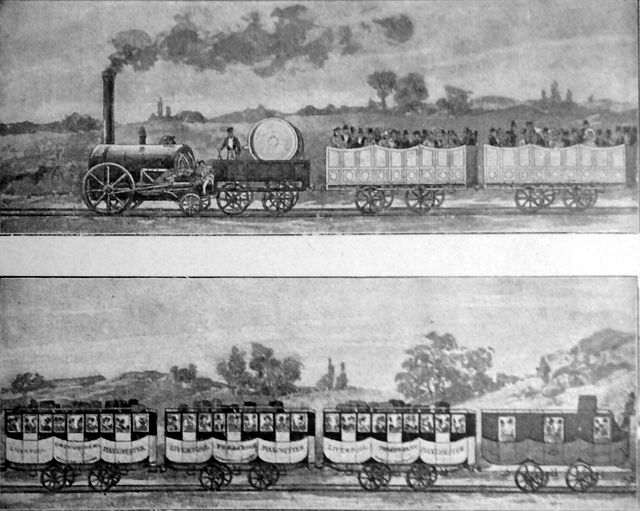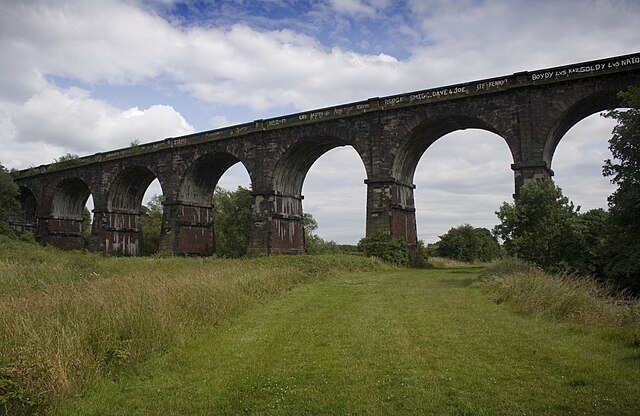Railway Mania was a stock market bubble in the rail transportation industry of the United Kingdom of Great Britain and Ireland in the 1840s. It followed a common pattern: as the price of railway shares increased, speculators invested more money, which further increased the price of railway shares, until the share price collapsed. The mania reached its zenith in 1846, when 263 Acts of Parliament for setting up new railway companies were passed, with the proposed routes totalling 9,500 miles (15,300 km). About a third of the railways authorised were never built—the companies either collapsed due to poor financial planning, were bought out by larger competitors before they could build their line, or turned out to be fraudulent enterprises to channel investors' money into other businesses.
A painting of the inaugural journey of the Liverpool and Manchester Railway, by A. B. Clayton
George Hudson
Liverpool and Manchester Railway
The Liverpool and Manchester Railway (L&MR) was the first inter-city railway in the world. It opened on 15 September 1830 between the Lancashire towns of Liverpool and Manchester in England. It was also the first railway to rely exclusively on locomotives driven by steam power, with no horse-drawn traffic permitted at any time; the first to be entirely double track throughout its length; the first to have a true signalling system; the first to be fully timetabled; and the first to carry mail.
A lithograph of the Liverpool and Manchester Railway crossing the Bridgewater Canal at Patricroft, by A. B. Clayton.
Illustration of the railway in 1830
A replica LMR coach and Rocket at the Rocket 150 event
Stephenson's viaduct crosses the Sankey Brook, and the remains of the Sankey Canal. The viaduct is in use to this day.





